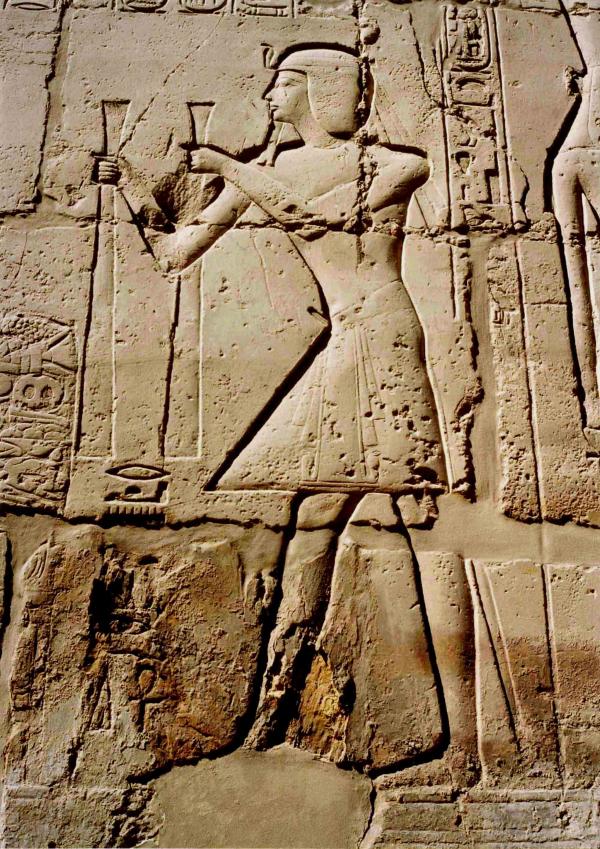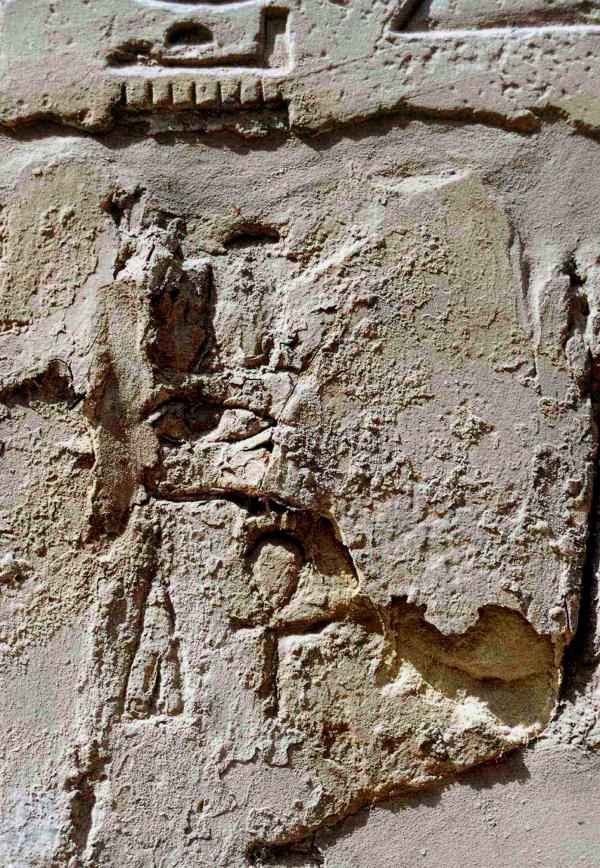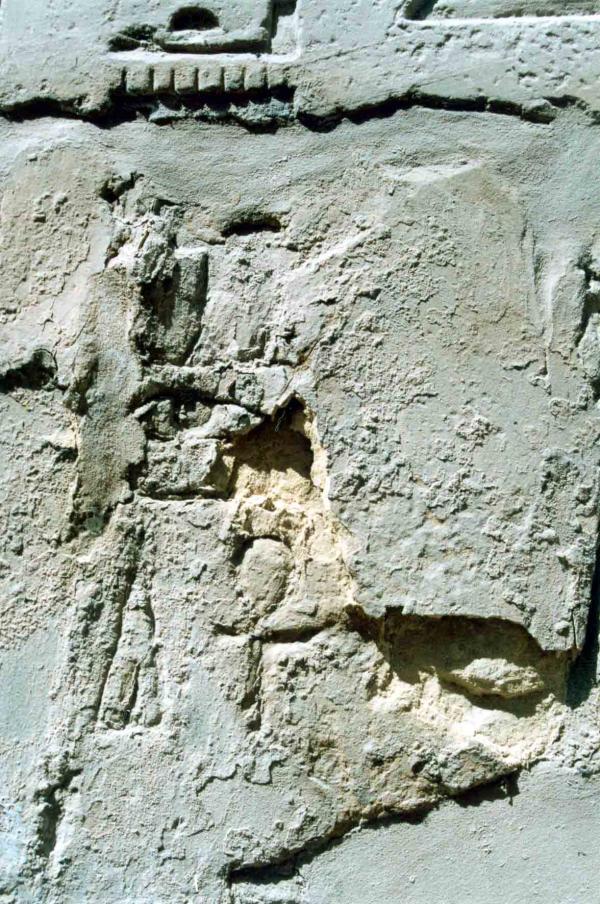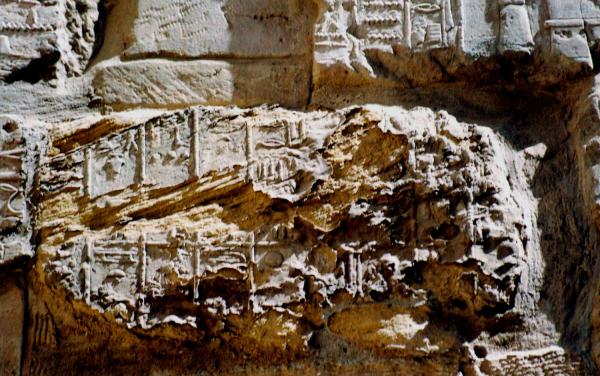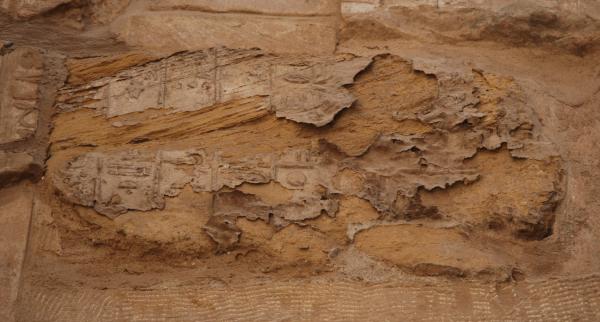Endangered Monuments
The Danger of Salt and Water InfiltrationThe reliefs and inscriptions in the Great Hypostyle Hall of Karnak temple are decaying rapidly. This is caused by groundwater containing salts which attack the surface of the stone, destroying the reliefs. This process is now dramatically apparent in the southern half of the Hypostyle Hall. Along the west wall, Ramesses II's reliefs had been in good condition. But since a series of disastrous flash floods struck the Luxor area in the fall of 1994, large patches along the bottom of the walls are covered with salts which are rapidly obliterating the decoration.
The destruction takes a number of forms. Dark brown patches show where the salt laden stone absorbs moisture like a sponge. Areas of crystallized salt resembling frost appear on the walls where salt laden moisture has evaporated. In some places, the decoration is covered by a thick, blistered crust of salt and dissolved sandstone as hard as concrete. Here the reliefs look as though they have partially melted. Worst of all are powdery blotches of sulphurous yellow, where the salts have severed the chemical bonds holding the stone together, and it has reverted back to the sand from which it was made. It then crumbles like a dried-out sand castle.
Sadly, the ultimate fate of the southern portion of the Hall, still largely intact, may be seen in the northern wing with its exquisite bas reliefs of Seti I. Large portions are missing from intricate scenes carved in bas relief on the lower part of the north walls. In some areas, the entire lower register of scenes is gone. This may be the imminent fate of Ramesses II's still largely intact reliefs in the south half of the Hypostyle Hall too, and of countless other temple reliefs at Karnak and elsewhere in Luxor unless drastic measures are taken to solve the groundwater problem and conserve the decaying stone.
|

